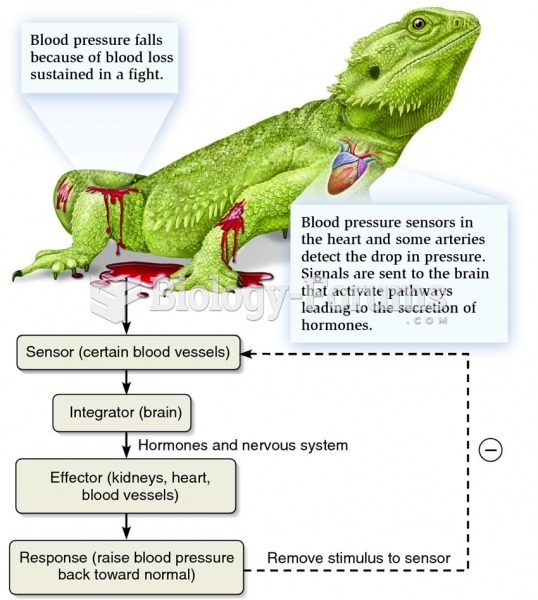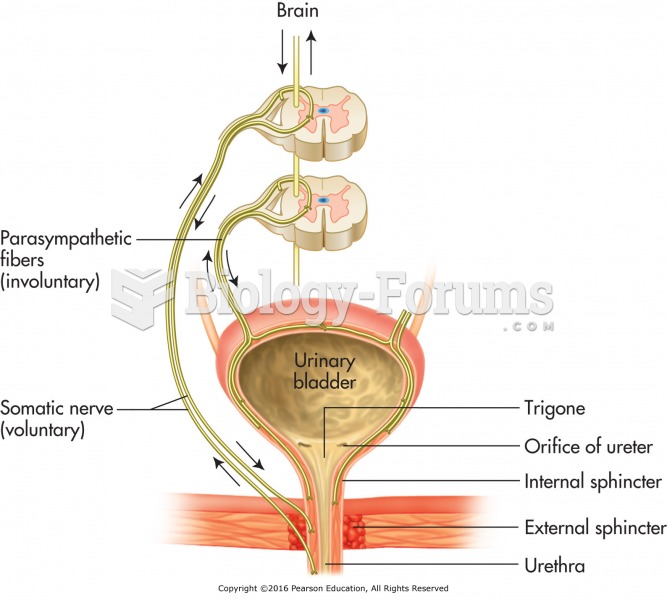|
|
|
To maintain good kidney function, you should drink at least 3 quarts of water daily. Water dilutes urine and helps prevent concentrations of salts and minerals that can lead to kidney stone formation. Chronic dehydration is a major contributor to the development of kidney stones.
The top 10 most important tips that will help you grow old gracefully include (1) quit smoking, (2) keep your weight down, (3) take supplements, (4) skip a meal each day or fast 1 day per week, (5) get a pet, (6) get medical help for chronic pain, (7) walk regularly, (8) reduce arguments, (9) put live plants in your living space, and (10) do some weight training.
If all the neurons in the human body were lined up, they would stretch more than 600 miles.
After 5 years of being diagnosed with rheumatoid arthritis, one every three patients will no longer be able to work.
Multiple experimental evidences have confirmed that at the molecular level, cancer is caused by lesions in cellular DNA.






